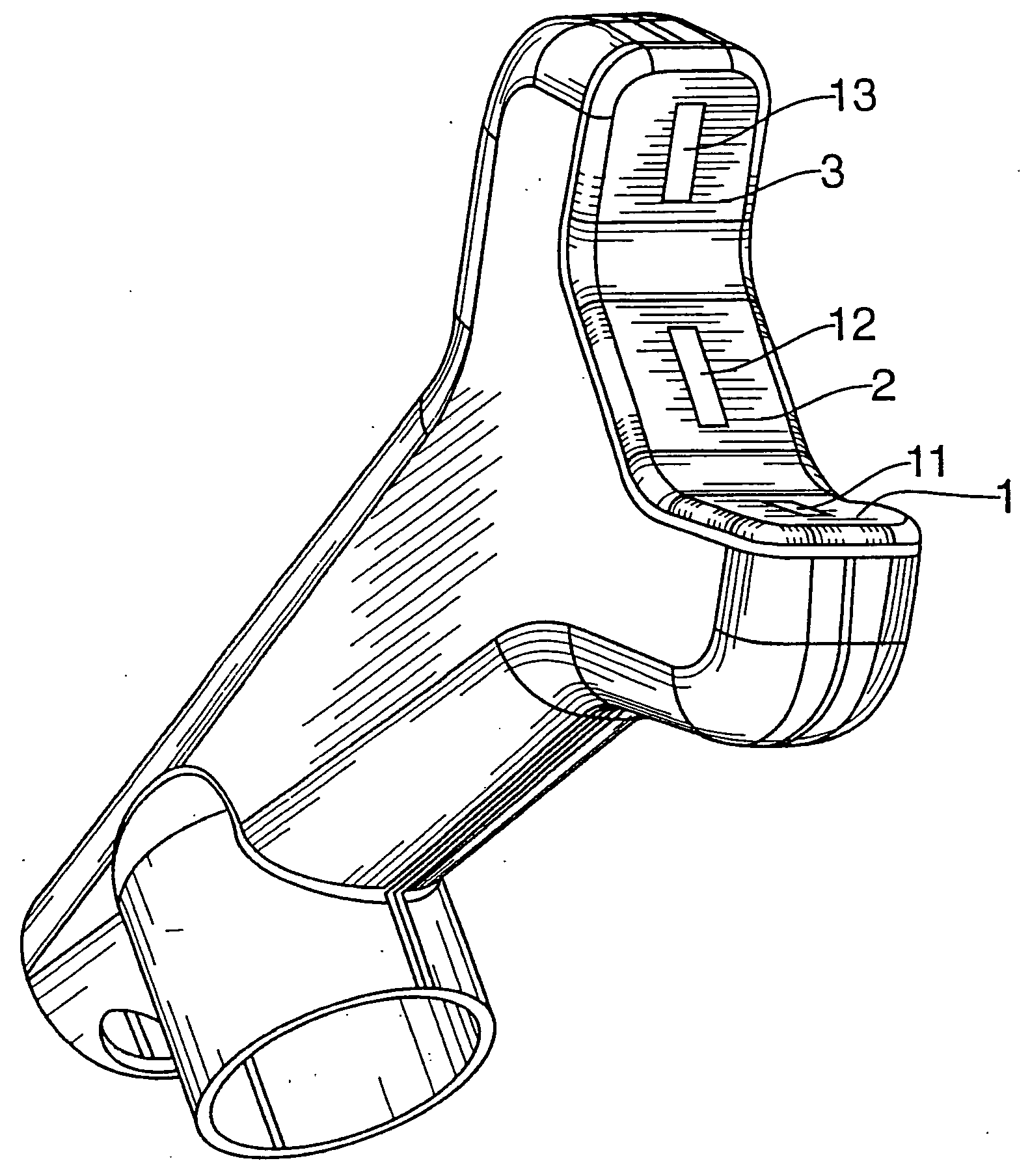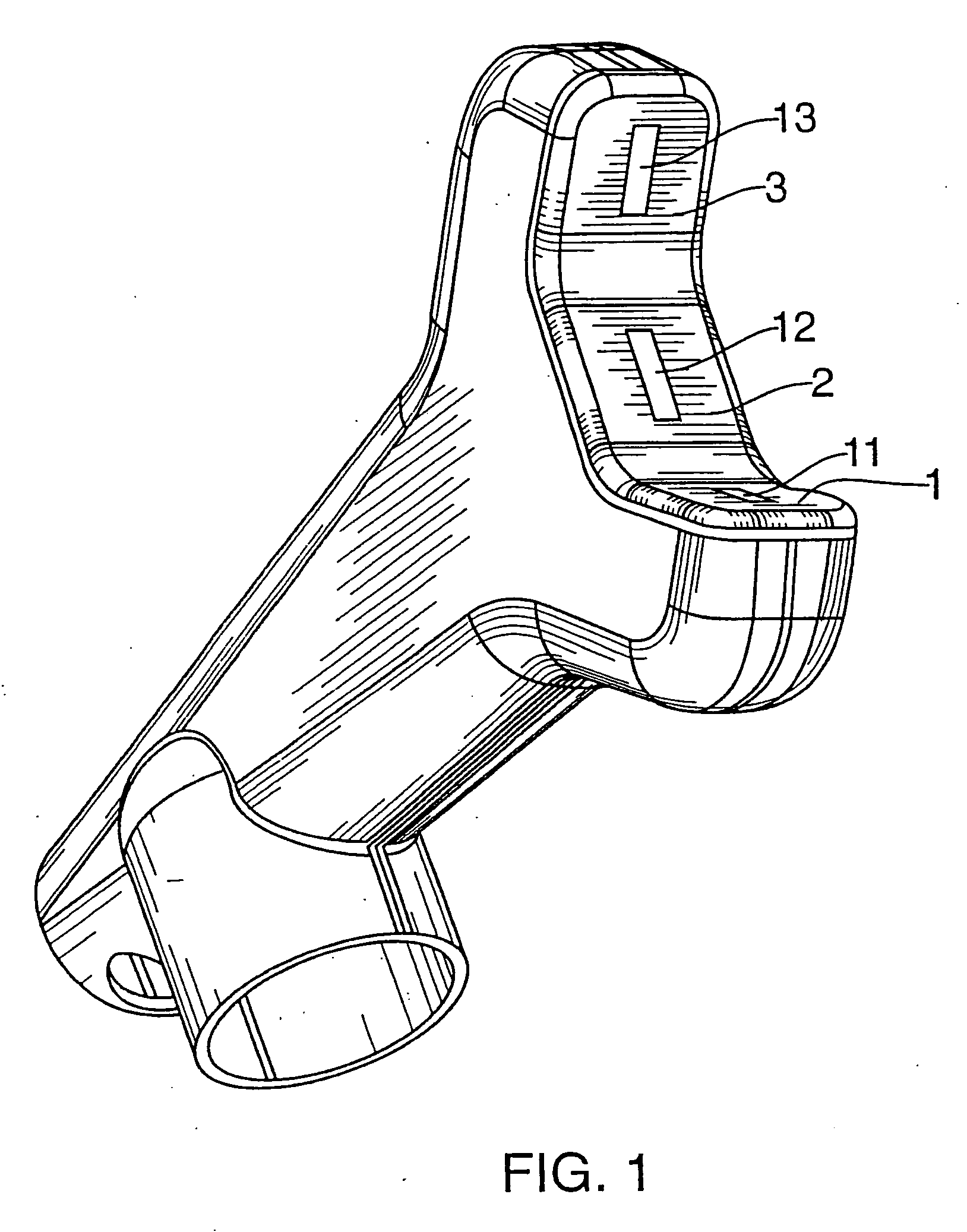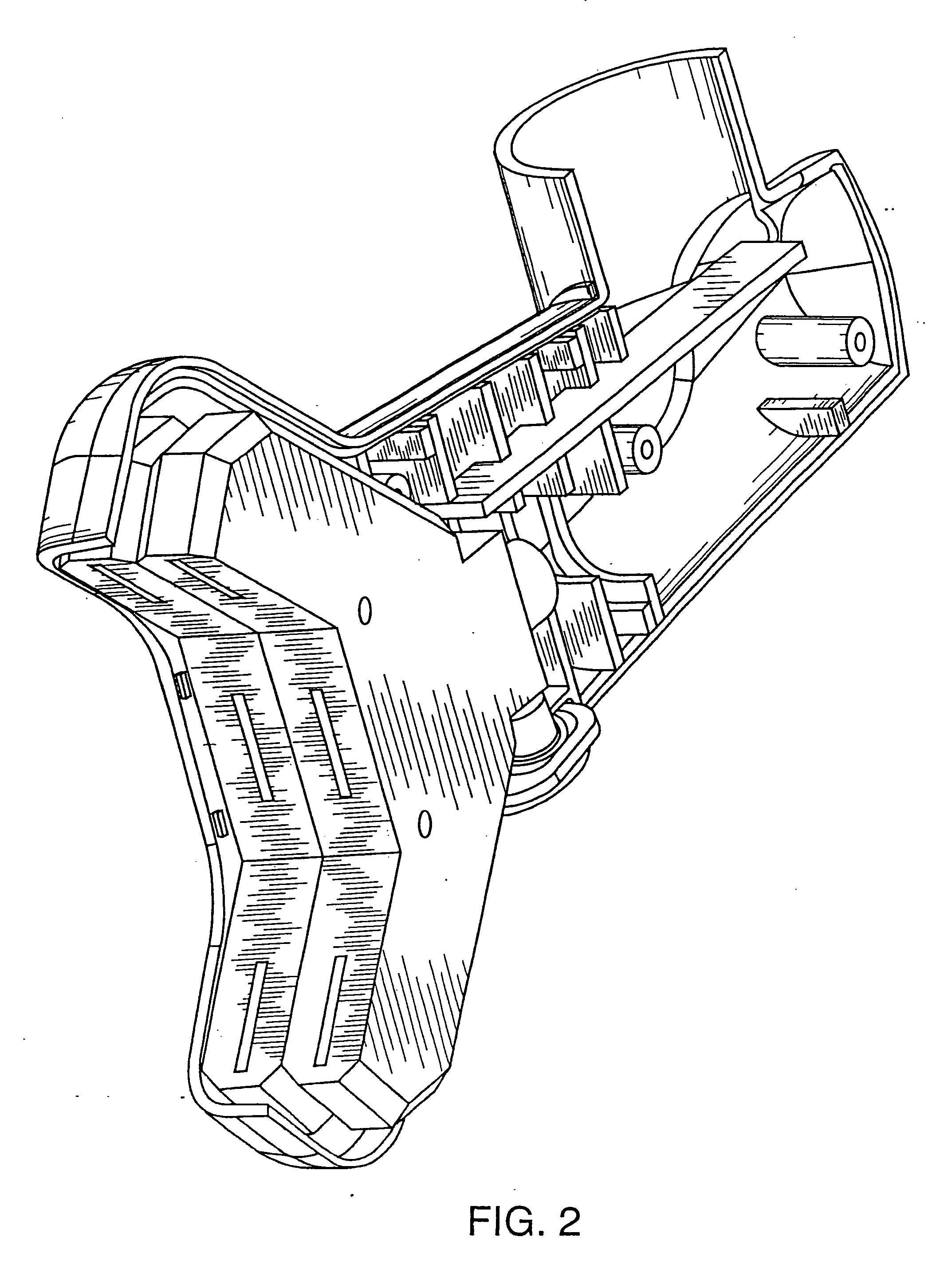Apparatus for simultaneous illumination of teeth
- Summary
- Abstract
- Description
- Claims
- Application Information
AI Technical Summary
Benefits of technology
Problems solved by technology
Method used
Image
Examples
example i
[0116] In order to determine the ability of the inventive compositions to eliminate tooth stain, a preliminary in vitro study on stained bovine enamel was performed. Squares of dental enamel 4 mm on a side were cut, using a diamond-cutting disk, from bovine permanent incisors. Using a mold, the enamel squares were embedded in clear polyester casting resin (NATCOL Crafts Inc., Redlands, Calif.) to provide 1.5 cm square blocks with the labial surface exposed. The top surface of the polyester blocks was ground flush with the leveled labial surface of the enamel squares by means of a dental model trimmer. The surface was then smoothed by hand sanding on 400-grit emery paper using water as the lubricant until all grinding marks were removed. Finally, the top surface of the blocks was hand polished to a mirror finish using a water slurry of GK1072 calcined kaolin (median particle size=1.2 microns) on a cotton cloth. The finished specimens were examined under a dissecting microscope and we...
example ii
[0130] A comparative study of light transmission through various light and / or heat activated tooth whitening gels was undertaken. Spectral energy curves were generated using an Ocean Optics spectrometer with a 50 micron fiber for gather emission data. Light transmission through a glass microscope slide was used as a control and the test consisted of coating the slide with a 1-2 mm thick layer of each tooth whitening gel and illuminating with a metal halide light source connected to an 8 mm glass fiber optic light guide. The light was filtered through a 505 nm short pass filter (only wavelengths less than 505 nm pass through) prior to entering the light guide. The spectrometer's fiber optic probe was placed against the opposite side of the slide from the gel in order to detect the wavelengths of light allowed to pass through the gel on the slide. The spectral curves of FIGS. 4A-E clearly demonstrate the degree of light attenuation caused by all of the commercially available compositi...
example iii
[0132] Another transparent hydrogen peroxide gel was prepared that had a lower concentration of oxidizer (3% by weight of H2O2), but at a pH of 7.0 and a much higher viscosity (approximately 1,000,000 cps). The gel below was prepared in accordance with the procedure in Example I, except that a Kynar coated Ross Double Planetary vacuum mixer (Charles Ross & Sons, Haupaugge, N.Y.) was used to handle the elevated viscosity achieved during and after neutralization with the ammonium hydroxide. Sodium stannate was added as an additional stabilizer for the hydrogen peroxide.
IngredientPercentageDistilled water81.010Glycerin 99.7%5.0001-hydroxyethylidene-1,1-diphosphonic acid0.400Sodium stannate0.015Hydrogen peroxide 35%8.570Carbopol 974P5.000Ammonium hydroxide 29%to pH 7.0TOTAL100.000
[0133] The ability of the 3% hydrogen peroxide gel, transparent to visible light between the wavelengths of 380 and 700 nanometers, is demonstrated in Table 3 below.
TABLE 3WavelengthPowerEnergy / BovineOxidiz...
PUM
 Login to View More
Login to View More Abstract
Description
Claims
Application Information
 Login to View More
Login to View More - R&D
- Intellectual Property
- Life Sciences
- Materials
- Tech Scout
- Unparalleled Data Quality
- Higher Quality Content
- 60% Fewer Hallucinations
Browse by: Latest US Patents, China's latest patents, Technical Efficacy Thesaurus, Application Domain, Technology Topic, Popular Technical Reports.
© 2025 PatSnap. All rights reserved.Legal|Privacy policy|Modern Slavery Act Transparency Statement|Sitemap|About US| Contact US: help@patsnap.com



